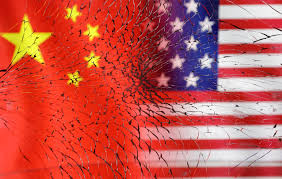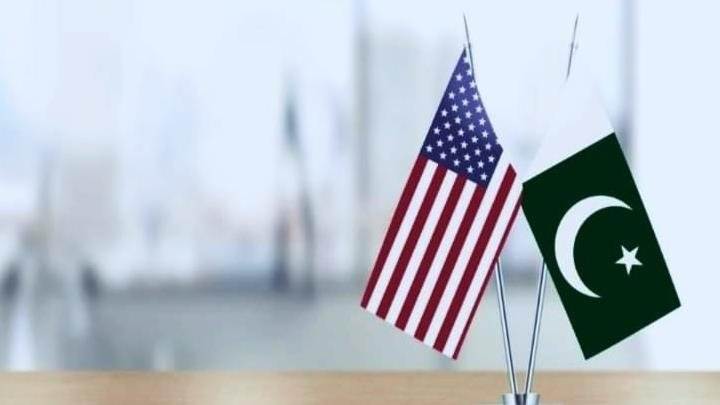Zeeshan Naveed Shah
The China-USA rivalry has had a profound impact on international relations in recent years. The two global powers are currently engaged in a multifaceted competition that spans economic, political, and strategic domains. This rivalry has led to a wide range of consequences for international relations, including increased tensions and instability in many parts of the world. China’s rise as a global power has challenged America’s dominance, and the US has responded by adopting a more confrontational approach towards China. This has led to a wide range of disputes, from trade and investment to territorial disputes in the South China Sea. The rivalry has also led to a growing polarization of global economic and political networks, with countries increasingly aligning themselves with one or the other of the two global powers. Some countries are seeking to balance between the two powers, while others are being forced to pick sides. The impact of this rivalry is likely to continue to shape international relations for many years to come, with significant implications for global stability, security, and economic growth.
The US-China rivalry has not only impacted South Asian security but also hindered economic integration in the region. The US, in its ‘Contain China’ policy, has taken India under its wing, leading to a continual security dilemma and economic fragmentation in the region. The focus on security and geopolitics has resulted in South Asian countries being deprived of economic integration, which is crucial for realizing the true geo-economic potential of the region.
The US has been courting India since the early 2000s, starting with the strategic partnership in civilian nuclear tech, space, missile defense, and hi-tech areas under the Next Steps in Strategic Partnership in 2004. The US has made exceptions for India in Missile Technology Control Regime, exports licensing, and nuclear cooperation. India has been facilitated in achieving a waiver in Nuclear Suppliers Group, which allowed it to develop its very ambitious missile program. India has signed four foundational agreements with the US – LEMOA (2016), COMCASA (2018), BECA (2020), and the General Security of Military Information Agreement (GESOMIA 2002).
The strategic partnership between the US and India has given India the opportunity to expand its ambitious missile, nuclear, and space defense programs, thereby gaining a significant advantage over its neighbors. This has created a security dilemma for these neighbors, forcing them to continually upgrade their own defense capabilities. The resulting arms race is both needless and costly, diverting resources from economic development and regional integration.
The US paranoia about China and its influence on India has instilled a feeling of ‘hubris’ in the country. This feeling leads to policies that promote conflict, proxy warfare, and arms race at the cost of regional trade and economic integration. Compared to ASEAN and EU, whose intra-regional trade is 23% and 75%, respectively, the intra-regional trade in South Asia is a measly 5%. This lack of internal trade is a significant obstacle to the region’s development. Another negative impact of the US-China competition is the Indian propensity to isolate Pakistan economically by stonewalling all connectivity initiatives. SAARC, a beneficial regional cooperation and integration forum, is dysfunctional due to Indian non-cooperation. Several attempts by Pakistan to reinvigorate SAARC have withered on the vine of Indian obduracy.
Instead of making use of geography as a connector, India has started sponsoring circuitous connectivity initiatives, deliberately bypassing Pakistan. Three such initiatives include India-Myanmar-Thailand (IMT) Corridor, International North-South Transport Corridor (INSTC), and India-Middle East-Europe-Economic Corridor (IMEC), which India is actively pursuing to the total exclusion of Pakistan. This exclusion also suits external powers inimical to China-Pakistan Economic Corridor (CPEC) that view East-West Economic Corridor (EWEC), linking India, Pakistan, Afghanistan, Central Asia, and West Asia, as a threat.
There are other emerging security and economic alliances in the Indo-Pacific region that are a direct consequence of the US-China geopolitical competition close to South Asia. These alliances include Quad (Australia, India, Japan, USA), AUKUS (Australia, UK, USA), and Trilateral Security Alliance (Japan, Philippines, and USA). There is an emerging economic alliance called Indo-Pacific Economic Framework (IPEF), which ostensibly seeks to bind Quad members in an economic union but, in actual fact, is an attempt to fob off the criticism leveled at the overly militaristic nature of the US-led Indo-Pacific alliances.
The US-China rivalry has had a detrimental effect on Pakistan’s economic connectivity and natural resource extraction prospects. The anti-CPEC paranoia, fueled by the US’s ‘Contain China’ policy, has led to proxy warfare by Indian intelligence agencies through terrorist entities. These activities, aimed at stonewalling CPEC and other regional connectivity initiatives, have hindered Pakistan’s development and its partnerships, particularly with China.
The mineral-rich areas of KPK’s merged districts and Balochistan’s districts like Chaghi, which have large copper and gold deposits, have remained the focus of international exploration efforts. Still, the security environment has prevented Pakistan from optimizing the full exploration potential of these mineral-rich regions. Out of 30 mineral exploration blocks in merged districts of KPK, only six have been opened so far for exploration, primarily due to security concerns. The same is the case with oil and gas exploration blocks like Wali West in Bannu (KPK) and the most promising Kohlu Block 28 in Balochistan, which has lain unexplored for the last 33 years.
The minimum oil and gas well drilling density in case of Balochistan (0.24) and KPK (0.51) indicates the low exploration imprint untapped energy due to security threats and associated costs. Apart from mineral resource and oil exploration prospects, Pakistan is suffering the impact of geopolitical rivalry in the shape of lost connectivity potential with Central and West Asia. Road, rail, and digital connectivity corridors like Termez-Jalalabad-Peshawer that could connect South Asia with Central Asia reducing the freight time and cost by fifty per cent have not taken off the ground due to a destabilized Afghanistan and lack of funding interest by Western donors.
The US-China rivalry is creating negative incentives for Western powers and their ally India to keep South Asia away from regional trade and economic integration. A sanctioned Iran, destabilized Afghanistan, and insurgency-prone Pakistan apparently serve the selfish interests of competition-driven geopolitics pursued by global powers and their regional surrogates like India. The trade and economic connectivity eludes South Asia, leaving it at the mercy of confrontational jousts for geopolitical one-upmanship.
The fruits of regional peace and connectivity are apparent as daylight. It is up to India to see the futility of a confrontational stance in the service of a global power that denies itself and the region the benefits of regional integration, and to make a strategic reset in its geopolitical orientation in line with its putative strategic autonomy notion in order to usher in a South Asian economic renaissance.

















